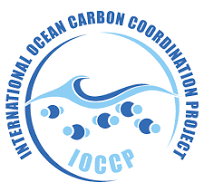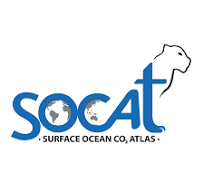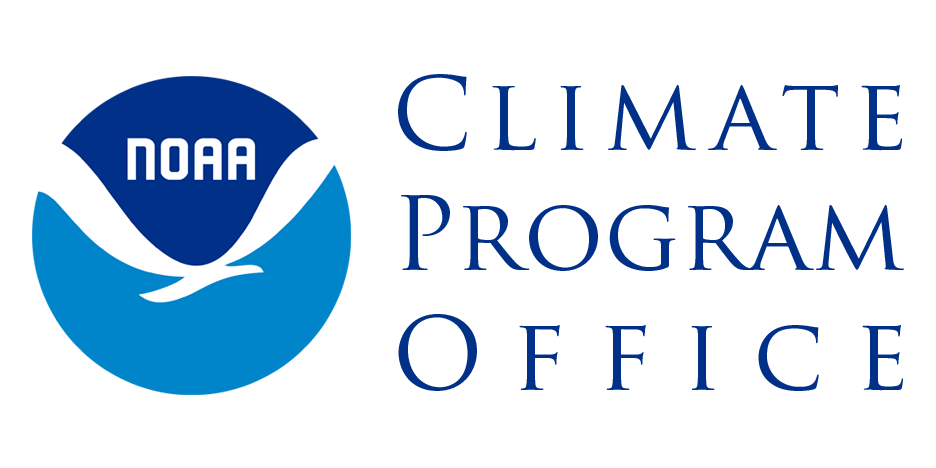Le Commandant Charcot Underway pCO2 Data
SCROLL TO LEARN MORE
Who We Are
| Rik Wanninkhof, Ph.D.
Senior Technical Scientist
| Denis Pierrot, Ph.D.
Oceanographer
About the Le Commandant Charcot
 Le Commandant Charcot is an icebreaking cruise ship operated by the French operator: Compagnie du Ponant. It is a Polar Class 2 rated icebreaking vessel capable of reaching remote polar destinations such as the Geographic North Pole. She features a hybrid power plant powered by liquefied natural gas (LNG) and 5 MWh electric batteries, capable of briefly driving the ship without engines running. The Le Commandant Charcot is a unique cruise expedition vessel designed for extreme polar conditions that give the rare opportunity to 270 passengers to explore remote polar areas. Since the beginning of the project, Ponant has designed the vessel as “a Ship of Opportunity” for the scientific community. It has a dedicated infrastructure for making measurements, experiments and has autonomous data acquisition available for researchers. The Ponant Science Program has a dedicated science coordinator onboard for the maintenance and operation of the different instruments.
Le Commandant Charcot is an icebreaking cruise ship operated by the French operator: Compagnie du Ponant. It is a Polar Class 2 rated icebreaking vessel capable of reaching remote polar destinations such as the Geographic North Pole. She features a hybrid power plant powered by liquefied natural gas (LNG) and 5 MWh electric batteries, capable of briefly driving the ship without engines running. The Le Commandant Charcot is a unique cruise expedition vessel designed for extreme polar conditions that give the rare opportunity to 270 passengers to explore remote polar areas. Since the beginning of the project, Ponant has designed the vessel as “a Ship of Opportunity” for the scientific community. It has a dedicated infrastructure for making measurements, experiments and has autonomous data acquisition available for researchers. The Ponant Science Program has a dedicated science coordinator onboard for the maintenance and operation of the different instruments.
In April of 2022, in collaboration with Ponant and Dr. Nicolas Cassar of Duke University in Durham, NC, our group installed an autonomous instrument on this vessel to measure CO2 in the surface water and the overlaying atmosphere above it. The unique geographic areas that the ship will visit are rarely sampled and will provide a unique data set that will further our understanding of the carbonate system in high latitude regions.
About the Website
This web site provides access to the fugacity of CO2 (fCO2) data collected on this ship. Note, fCO2 is the partial pressure pCO2 corrected for non-ideality of the CO2 gas; they are numerically similar (fCO2 ≃ 0.995 pCO2). The processed data are organized by year and by cruise. For each cruise, the color coded fCO2 values are plotted along the ship’s cruise track on a chart. Next to each chart are links to the comma-delimited data file and the associated Readme file. To download a data file, select the year from the drop-down list box. Choose a chart and cruise, right-click on the link to its data file or Readme file, and select the download option. Please consult with and acknowledge the AOML Ocean Carbon Cycle group if data is used for publication or presentation (contacts in Master Readme, or (Denis.Pierrot@noaa.gov).
The Master Readme provides meta data that is applicable for all data gathered from this ship. The individual Readme files next to the charts provide meta data specific to the associated cruise. The Realtime Display link displays plots of the raw xCO2 data as a function of time and location. These plots are suitable for monitoring but are not suitable for environmental interpretation since the Realtime data has not been processed nor quality controlled.
Le Commandant Charcot Underway pCO2 Data
Le Commandant Charcot Master Readme
Introduction
The information presented in this file is applicable to all the data sets collected on the M/V Le Commandant Charcot that are presented on this page.
Any temporary changes in this information will be noted in the readme files for the individual expeditions.
Statement for use of data:
These data are made available to the public and the scientific community in the belief that their wide dissemination will lead to greater understanding and new insights. The availability of these data does not constitute publication of the data. We rely on the ethics and integrity of the user to ensure that the AOML ocean carbon group receives fair credit for its work. Please consult with us prior to use so we can ensure that the quality and limitations of the data are accurately represented.
Platform Information:
In 2022 the Ocean Carbon Group at NOAA’s Atlantic Oceanographic and Meteorological Laboratory (AOML) installed an autonomous instrument to measure CO2 levels in surface water on the Le Commandant Charcot. This installation is a collaboration between our laboratory, the Companie du Ponant and Dr. Nicolas Cassar at Duke University.
Vessel Name: Le Commandant Charcot
Class of Data: Surface ocean carbon dioxide concentrations
Scientists responsible for the technical quality of this pCO2 dataset:
Rik Wanninkhof and Denis Pierrot
NOAA/AOML/Ocean Chemistry and Ecosystems Division
4301 Rickenbacker Causeway
Miami, FL 33149
Rik.Wanninkhof@noaa.gov
Denis.Pierrot@noaa.gov
Contact person for this dataset:
Denis Pierrot
NOAA/AOML/Ocean Chemistry and Ecosystems Division
4301 Rickenbacker Causeway
Miami, FL 33149
Denis.Pierrot@noaa.gov
Component Specifications and Accuracies
The accuracies of all components, when operating optimally, are such that the calculated seawater fCO2 has an accuracy of 2 uatm or better and the calculated mole fraction of CO2 (XCO2) in air has an accuracy of 0.1 uatm.
Infrared Analyzer:
LI-COR model 6262
Licor_6262_Manual.pdf
CO2 resolution: 0.01 umol/m
CO2 accuracy: ±1 ppm at 350 ppm
Internal pressure transducer accuracy: ± 1.2 hPa
(manufacturer specifications:±0.1% FS, where FS = 0-1150 hPa)
External Pressure Transducer attached to analyzer: none
Differential Pressure Transducer attached to equilibrator:
Setra model 239
http://www.setra.com/ProductDetails/model_239.htm
Resolution: 0.01 hPa
Accuracy: ±0.052 hPa
(manufacturer specifications: ±0.14% FS, where FS = ±7.5 inches WC)
The absolute pressure of the equilibrator headspace reported in data files is the sum of the infrared analyzer pressure and the differential pressure in the equilibrator.
Equilibrator Temperature:
Hart model 1523
http://www.testequipmentdepot.com/fluke-calibration/pdfs/1523-1524_data.pdf
Resolution: 0.001°C
Accuracy: ±0.021°C
Sea Surface Temperature and Salinity (maintained by other scientists):
SeaBird model SBE-45
http://www.seabird.com/pdf_documents/manuals/45_017.pdf
Temperature resolution: 0.0001°C
Temperature accuracy: ±0.002°C
Salinity resolution: 0.0002‰
Salinity accuracy: ±0.005‰
SeaBird model SBE-38
http://www.seabird.com/pdf_documents/manuals/38_013.pdf
Temperature resolution: 0.00025°C
Temperature accuracy: ±0.001°C
Instrument Description and Configuration
The general principle of operation of the instrument can be found in Wanninkhof and Thoning (1993), Ho et al. (1995), Feely et al. (1998), and Pierrot et al. (2009). Seawater flows through an equilibrator chamber where CO2 exchanges between water and the air above it. Small changes in seawater CO2 concentration are rapidly translated into changes in CO2 concentration in the air of the chamber (headspace). The mole fraction of CO2 in the headspace gas is measured using a non-dispersive infrared (NDIR) analyzer from LICOR®.
The effects of water vapor on the sample analyses are kept to a minimum by removing as much water as possible. The water is first condensed out of the sample gas stream by cooling to ~5 °C using a thermoelectric device. Then water is further removed using Nafion® gas dryers before reaching the IR analyzer. The counterflow gas in the dryer is pre-dried outside air. Typical water content of the analyzed gas is less than 3 millimoles/mole with approximately 90% of the water being removed.
The infrared analyzer is calibrated regularly using four standard gases (200 – 500 ppm CO2 in air) from NOAA ESRL (Boulder, CO). The ESRL standards are directly traceable to the WMO scale with calibration of each cylinder before deliver and after use. The zero gas of ultra-high purity air is analyzed regularly. Any value outside the range of the standards by more than ~100 ppm should be considered approximate (±5 ppm). While individual data points above the highest standard or below the lowest standard may less accurate, the general trends would be indicative of the seawater chemistry. The standards used on a particular cruise are listed in the individual readme file.
Sea water is drawn into the ship through a dedicated inlet located mid-ship in the engine room at about 9m depth. A temperature sensor (SBE38) is located between the inlet and the dedicated centrifugal sea water pump, which pushes water to the wet lab on Deck 3 at about 2-3 m above sea level. The pump pushes about 50L/min of seawater to overboard via a bypass line. The seawater line branches off in the wetlab to supply scientific seawater to a Ferrybox (~26L/min) and the pCO2 system (~4L/min). The bypass line flow can be reduced to provide pressure to the scientific systems. The transit from the inlet to the pCO2 equilibrator takes ? seconds and the water warms up by approximately 0.6 degree Celsius..
Seawater is pushed through a spray head into an equilibration chamber that includes a water jacket for better thermal stability (optional on the General Oceanics model 8050 system). The chamber had a 0.4 L water reservoir and a 0.6 L gaseous headspace. Water flow rate is 1.5-2.5 L/min. The rate at which the headspace gas is recirculated through the analyzer during EQU analyses is 70 – 150 ml/min.
The system also measures the CO2 content of ambient air. The air inlet is located at the top of the radar mast, forward of the stacks. Outside air is constantly being pulled (6 L/min maximum flow) through ~80 m of tubing (~1 cm OD Eaton Synflex 1300 tubing) to the analytical system. The flushing rate of the LI-COR analyzer during ATM analyses is 70 – 150 ml/min.
The GPS position, SST from the SBE38 and SSS from the SBE45 are provided to the CO2 analytical system by the ship via serial communication. Data is transferred to land via ftp using the ship’s internet connection. The CO2 data is transmitted back to land each day to monitor the analytical system’s performance.
A typical sequence of continuous analyses is:
STEP TYPE REPETITIONS
1 – Standards (all four) – 1
2 – ATM – 5
3 – EQU – 100
The amount of time between analyses depends on whether the analyses are of the same type of gas (e.g., STD, EQU) or not. When switching between different gases, the connecting tubes and analyzer are flushed for an initial interval called the ‘PRE-FLUSH’ time plus an interval called the ‘REGULAR FLUSH’ time. Between successive measurements of the same type of gas, the system is flushed for only the ‘REGULAR FLUSH’ time. The gas flow is then stopped. After the ‘STOP FLOW’ time interval, which is 10 seconds for all analyses, the output of the NDIR analyzer is read. The pre-flush time is set to 180 seconds and the regular flush time is set to 60 seconds for standards and ATM analyses. Both the pre-flush and regular flush times are 120 seconds for equilibrator headspace (EQU) analyses. With these settings, a complete set of standards and the atmospheric analyses is done every 5 hours and a full day contains about 500 analyses of the equilibrator headspace.
Calculations
The measured xCO2 values are linearly corrected for instrument response using the standard measurements (see Pierrot et al., 2009).
For the equilibrator headspace the fCO2eq is calculated assuming 100% water vapor content:
fCO2 = xCO2 P (1-pH2O) exp[(B11+2d12)P/RT]
where fCO2 is the fugacity in ambient air or equilibrator headspace, pH2O is the water vapor pressure at the sea surface or equilibrator temperature, P is the equilibrator or outside atmospheric pressure (in atm), T is the SST or equilibrator temperature (in K) and R is the ideal gas constant (82.057 cm&^3·atm·deg^-1·mol^-1). The exponential term is the fugacity correction where B11 is the first virial coefficient of pure CO2
B11 = -1636.75 + 12.0408 T – 0.0327957 T^2 + 3.16528E-5 T^3
and
d12 = 57.7 – 0.118 T</span?
is the correction for an air-CO2 mixture in units of cm^3·mol^-1 (Weiss, 1974).
The fugacity as measured in the equilibrator is corrected for any temperature difference between sea surface temperature and equilibrator chamber using the empirical correction outlined in Takahashi et al. (1993).
fCO2(SST) = fCO2(teq)exp[0.0423(SST-teq)]
where fCO2(SST) is the fugacity at the sea surface temperature and fCO2(teq) is the fugacity at the equilibrator temperature. SST and teq are the sea surface and equilibrator temperatures
in degrees C, respectively.
The amount of time between the sea water passing by the SST (SBE38) sensor and the water flowing through the equilibrator is estimated before assigning an SST value to each analysis. The patterns in the temperature records for the equilibrator and for SST over time are compared, and a time offset that optimizes the match of these patterns is determined. The time offset is applied to the SST measurements. A linear interpolation between the time-adjusted SST data yields the SST value assigned to each CO2 analysis and used in the fugacity calculations.
Data File Structure
List of variables included in this dataset:
COLUMN
HEADER
EXPLANATION
1.
EXPOCODE
Expedition code, where ‘????’
is the NODC ship identifier,
and YYYYMMDD is the UTC date that
the ship starts the expedition
2.
Group_Ship
AOML_Le Commandant Charcot, (if present)
3.
Cruise_ID
Dependent upon expedition’s name, (if present)
4.
YD_UTC
Decimal year day
5.
DATE_UTC_ddmmyyyy
UTC Date
6.
TIME_UTC_hh:mm:ss
UTC Time
7.
LAT_dec_degree
Latitude in decimal degrees (negative values are in southern hemisphere)
8.
LONG_ dec_degree
Longitude in decimal degrees (negative values are in western hemisphere)
9.
xCO2_EQU_ppm
Mole fraction of CO2 in the equilibrator headspace (dry) at equilibrator temperature, in parts per million
10.
xCO2_ATM_ppm
Mole fraction of CO2 in outside air in parts per million, (if present)
11.
xCO2_ATM_interpolated_ppm
xCO2 in outside air associated with each water analysis. These values are interpolated between the bracketing averaged good xCO2_ATM analyses, in parts per million, (if present)
12.
PRES_EQU_hPa
Barometric pressure in the equilibrator headspace, in hectopascals (1 hPa = 1 millibar)
13.
PRES_ATM@SSP_hPa
Pressure measured by outside barometer, corrected to sea level, in hectopascals
14.
TEMP_EQU_C
Water temperature in equilibrator, in degrees centigrade
15.
SST_C
Sea surface temperature from the ship’s remote temperature sensor, in degrees centigrade [interpolated, see note above]
16.
SAL_permil
Salinity from the thermosalinograph (SBE45), on the Practical Salinity Scale
17.
fCO2_SW@SST_uatm
Fugacity of CO2 in sea water, in Microatmospheres (100% humidity)
18.
fCO2_ATM_interpolated_uatm
Fugacity of CO2 in air corresponding to the interpolated xCO2, in microatmospheres (100% humidity), (if present)
19.
dfCO2_uatm
Sea water fCO2 minus interpolated air fCO2, in microatmospheres, (if present)
20.
WOCE_QC_FLAG
Quality control flag for fCO2 values (2 = good value, 3 = questionable value)
21.
QC_SUBFLAG
Quality control sub flag for fCO2 values provides explanation for atypical data, when QC_FLAG = 3
References
DOE (1994). OE (1994). Handbook of methods for the analysis of the various parameters of the carbon dioxide system in sea water; version 2. DOE.
Feely, R. A., R. Wanninkhof, H. B. Milburn, C. E. Cosca, M. Stapp and P. P. Murphy (1998). A new automated underway system for making high precision pCO2 measurements onboard research ships. Analytica Chim. Acta 377: 185-191.
Ho, D. T., R. Wanninkhof, J. Masters, R. A. Feely and C. E. Cosca (1997). Measurement of underway fCO2 in the Eastern Equatorial Pacific on NOAA ships BALDRIGE and DISCOVERER, NOAA data report ERL AOML-30, 52 pp., NTIS Springfield.
Pierrot, D., C. Neill, K. Sullivan, R. Castle, R. Wanninkhof, H. Luger, T. Johannessen, A. Olsen, R. A. Feely, and C. E. Cosca (2009). Recommendations for autonomous underway pCO2 measuring systems and data-reduction routines. Deep Sea Research II, 56: 512-522.
Wanninkhof, R. and K. Thoning (1993) Measurement of fugacity of CO2 in surface water using continuous and discrete sampling methods. Mar. Chem. 44(2-4): 189-205.
Weiss, R. F. (1970). The solubility of nitrogen, oxygen and argon in water and seawater. Deep-Sea Research 17: 721-735.
Weiss, R. F. (1974). Carbon dioxide in water and seawater: the solubility of a non-ideal gas. Mar. Chem. 2: 203-215.
Weiss, R. F., R. A. Jahnke and C. D. Keeling (1982). Seasonal effects of temperature and salinity on the partial pressure of CO2 in seawater. Nature 300: 511-513.
Takahashi, T., J. Olafsson, J. G. Goddard, D. W. Chipman, and S. C. Sutherland (1993). Seasonal variation of CO2 and nutrients in the high-latitude surface oceans: a comparative study, Global Biogeochem. Cycles, 7, 843-878.




